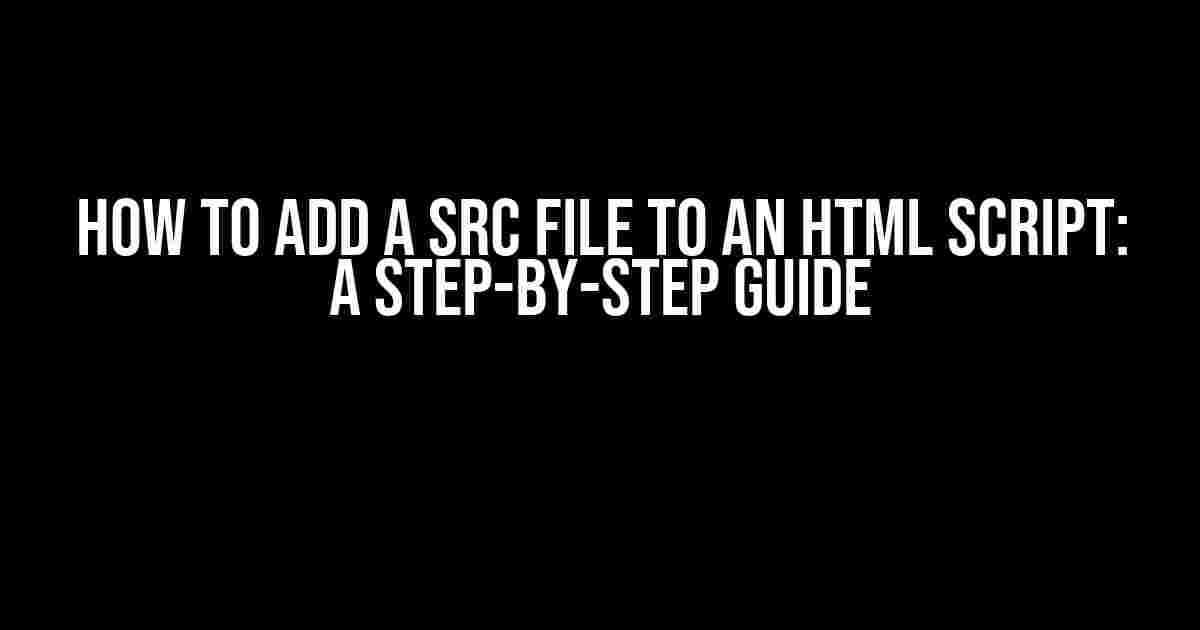Are you tired of writing repetitive code in your HTML scripts? Want to know the secret to making your code more efficient and organized? Look no further! In this article, we’ll show you how to add a src file to your HTML script, streamlining your coding process and taking your web development skills to the next level.
What is a Src File?
Before we dive into the nitty-gritty, let’s quickly cover what a src file is. A src file, short for “source file,” is a separate file that contains reusable code that can be linked to your HTML script. This file can contain JavaScript, CSS, or even HTML code that you want to use across multiple web pages.
Why Use a Src File?
Using a src file offers several benefits, including:
- Code Reusability: With a src file, you can write code once and use it across multiple web pages, reducing code duplication and making maintenance a breeze.
- Easy Updates: When you need to make changes to your code, you can simply update the src file, and the changes will be reflected across all linked web pages.
- Improved Organization: Src files help keep your code organized by separating concerns and making it easier to manage complex projects.
How to Add a Src File to an HTML Script
Now that you know the benefits of using a src file, let’s get started with adding one to your HTML script!
Step 1: Create a Src File
Create a new file with a `.js` or `.css` extension, depending on the type of code you want to include. For this example, we’ll create a JavaScript src file called `script.js`.
// script.js
function greet(name) {
console.log(`Hello, ${name}!`);
}
Step 2: Link the Src File to Your HTML Script
To link the src file to your HTML script, you’ll need to use the `
